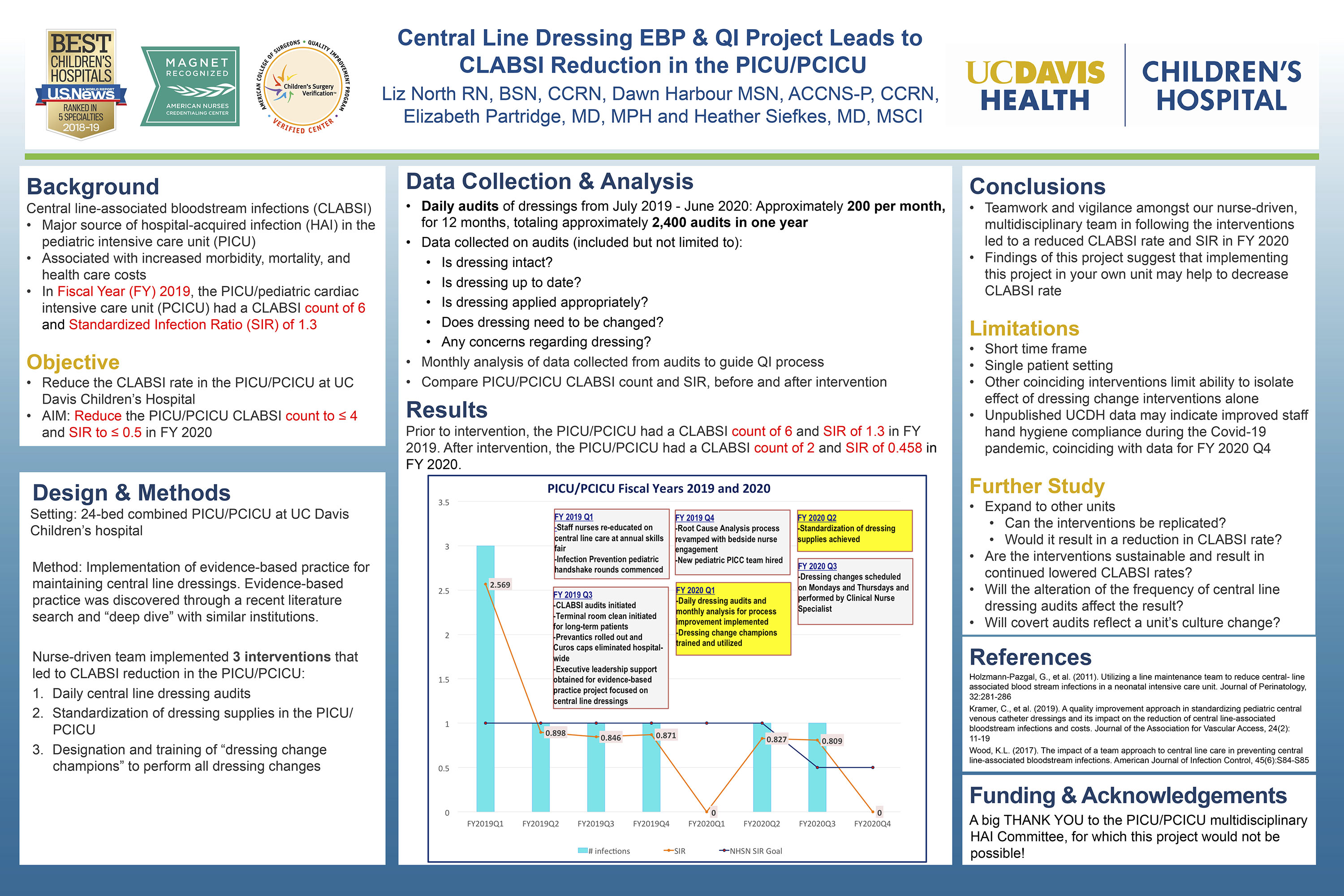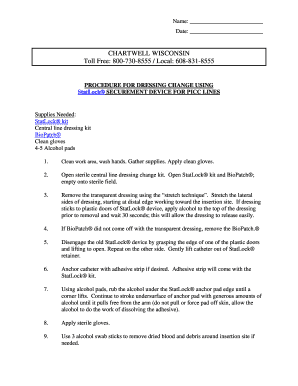central line dressing change pdf
Among the 14 clinical units participating 8 were in a university hospital setting and 6 were in community hospital settings. CHG bathing process compliance and nursing staffs knowledge and perceptions of CHG bathing significantly improved after the intervention p 009 p 002 and p 01 respectivelyCHG bathing documentation compliance and CLABSI.

Ea 1 Central Line Dressing Change Kit With Chloraprep Central Line Changing Kit Line
Provides education of care.

. TM - q5 days or if dressing becomes non-occlusive Check Biopatch TM. Staff Training and CompetencySkills Assessments Maintenance. This type of catheter has special benefits in that it can deliver fluids into a larger vein and that it can stay in the body for a longer period of time than a usual shorter IV.
- a minimum of q4h - before and after an infusion - q dressing change Post-bathing or when soiledwet NICU - Broviac TM only M-W-F. This dressing can be removed after 24 hours. Sterile Dressing Change Change dressing 24 hours post insertion Every 7 days Hibiclens followed by Chloraprep Biopatch.
Separate changing rooms may be provided for men and women or there may be a non-gender-specific open space with individual cubicles or stalls as with unisex public toiletsMany changing rooms include toilets sinks and showers. PDF 485K Actions. Make sure the bottom edge of the waterproof cover is below your dressing and the lumens of your catheter are tucked into the waterproof cover and completely covered.
It can lift your dressing when you remove the waterproof cover after showering. Whatever the care setting 55 of intravenous administration sets were replaced every 35 days. 5 or 3 a differential time to positivity 2 h in favor of central line sample.
Change gauze dressings at least every two days or semipermeable dressings at least every seven days. Sample procedure note for documentation of central line insertion from Beth Israel Medical Center. Smooth the bottom edge down.
Measure the external catheter at every dressing change and compare to length at the time of insertion. PICC or Midline Catheter Sterile Dressing Change If parts of the gel come off the dressing remove the gel with a sterile saline soaked gauze. For patients 18 years of age or older use a chlorhexidine impregnated dressing with an FDA cleared label.
Sometimes a changing room exists as a. Assess the need for the catheter each day and remove ASAP. Dressing frequency type of antiseptic used and protocol of catheter flushing complied with local recommendations.
A catheter occlusion occurs when a blockage prevents caregivers from flushing the central line or aspirating blood. Then she will gently pull the catheter out of the vein and apply a dressing to the site. Zero catheter migration any migration should be investigated especially for paediatric patients.
Change dressing if not intact and replace at appropriate intervals. This guideline provides recommendations. Follow your facilitys policy.
Avoid using the femoral site in adult patients. Always check the length of the PICC catheter from where it exits your skin to its tip with each dressing change. Hold the catheter at the exit site with the other gloved hand to keep it from being pulled out when removing the dressing.
A Fitting room or dressing room is a room where people try on clothes such as in a department store. Instead it has a small reservoir implanted under the skin. Change font size to suit Page 1 of 28 Guideline Peripherally inserted central venous catheters PICC 1.
Checklist for Prevention of Central Line. A central line is longer with a larger tube and is placed in a large central vein in the neck upper chest or groin. Insertion site Tip of central line Collarbone.
Change at appropriate intervals. Smooth the cover down over your dressing. Potential problems with having a PICC Thrombosis Having a catheter sitting in a vein does mean there is a risk of causing a blood clot.
Gauze - q24 hrs Transparent only - q72 hrs or if dressing becomes non-occlusive Transparent with Biopatch. Peel off the bottom strip. An occlusion can be thrombotic or nonthrombotic not caused by a thrombus.
This sounds very alarming but when it does happen its very. After 24 hours dressing is to be changed teach family the signs and symptoms to report and how to perform dressing change. Apply a sterile 2 x 2 gauze dressing under the transparent dressing.
Perform routine dressing changes using aseptic technique with clean or sterile gloves. MediPort is a central venous line that does not have an external connector. Change the dressing every 24 to 48 hours.
Document procedure patient tolerance site assessment education provided related to 5. Read more about central venous access device - dressing and needleless injection cap change. Central Line Dressing Change external icon Video for staff education on central line dressing changes from the Armstrong Institute for Patient Safety and Quality at Johns Hopkins.
Purpose This guideline has been developed as part of the I-Care intervention bundle for the management of intravascular devices IVDs.

112 Central Venous Access Devices Eviq

How Do I Change A Picc Dressing Peripherally Inserted Central Catheter Youtube Home Health Nurse Catheter Nurse

Cvl Picc Dressing Change Procedure

Pdf Tegaderm Chg Iv Securement Dressing For Central Venous And Arterial Catheter Insertion Sites A Nice Medical Technology Guidance

3m Picc Cvc Securement Device 3m Tegaderm Chg Chlorhexidine Gluconate I V Securement Dressing 3m United States

Reducing Clabsi Rates On Davis 8 A Multi Pronged Quality Improvement Project To Decrease Clabsis On A 35 Bed Oncology And Bone Marrow Transplant Unit

Central Line Dressing Change Nursing Skills Youtube

Central Line Dressing Ebp Qi Project Leads To Clabsi Reduction In The Picu Pcicu

Statlock Picc Neonate Stabilization Device Bard Access Systems Pdf Catalogs Technical Documentation

Picc Cfch Centre For Clinical Haematology

Picc Line Dressing Change Documentation Sample Fill Online Printable Fillable Blank Pdffiller
